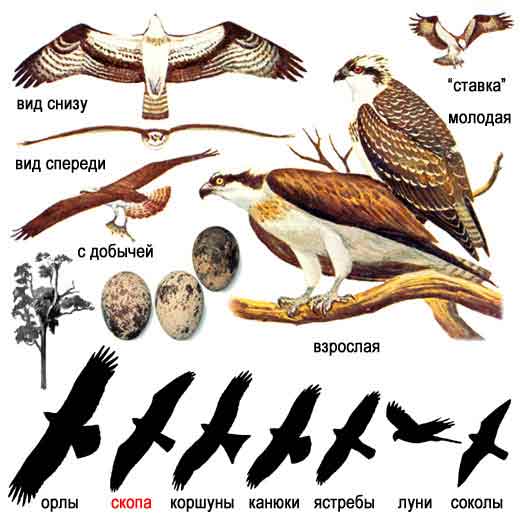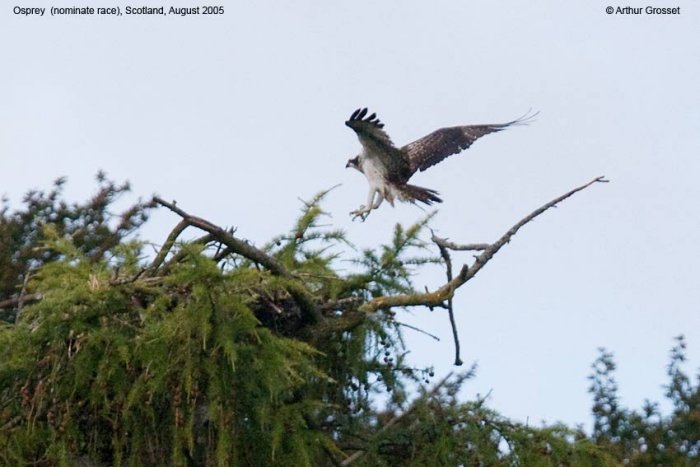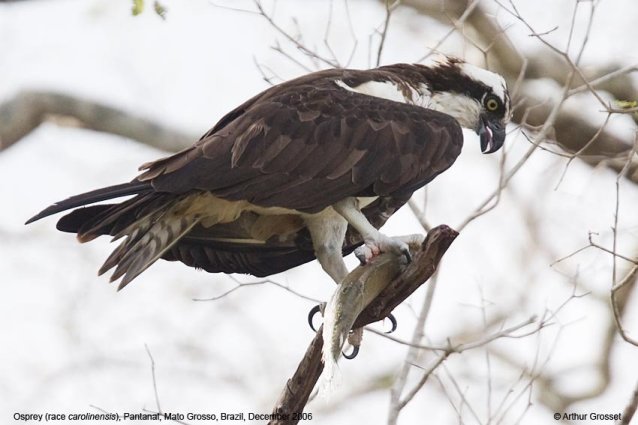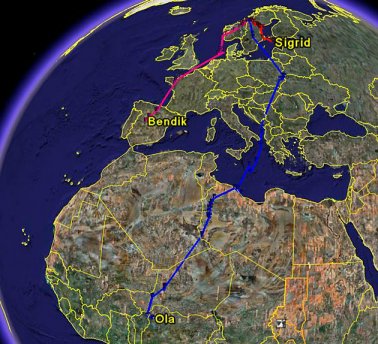|
Our
Beautiful World
|
Osprey, Pandion haliaetus

© http://www.ecosystema.ru/
 © www.ecosystema.ru/ The Osprey is distributed widely in both the Old and New Worlds but breeds almost exclusively in the northern hemisphere. Most populations are migratory and those seen in Scotland arrive to breed in early April and leave to spend the winter in Africa by about the end of August . They are very faithful to their nest site and reasonably faithful to their partners. The same individuals are normally identified as returning to the same territories every spring.   © www.ecosystema.ru/ The Osprey readily builds its nest on manmade structures, such as telephone poles, channel markers, duck blinds, and nest platforms designed especially for it. Such platforms have become an important tool in reestablishing Ospreys in areas where they had disappeared. In some areas nests are placed almost exclusively on artificial structures.
 © Arthur Grosset The Osprey is a fish-eating specialist, with live fish accounting for about 99% of its diet. Barbed pads on the soles of its feet help it grip slippery fish. When an Osprey takes a large fish to its nest, it carries the fish headfirst to make it as aerodynamic as possible.  © Arthur Grosset Adult birds have a dark brown back and white forehead, cheeks, neck, breast, and belly. A dark stripe extends from the base of the beak and across the eye to the back. The head and upper part of the breast are streaked brown, as is the underside of the wings and tail. In North America, the breast stripes are heavier on the female than on the male. The juveniles and adults look much alike; however, on the juveniles the brown feathers on the upper parts are tipped with white and the breast and head are more heavily striped. Ospreys acquire their adult plumage at about 18 months. As is the case with most raptors, the female is larger than the
male. She weighs on average 1.6 kg, compared with 1.4 kg for the
male,  © Arthur Grosset When an Osprey spots a fish from the air, it hovers at a height of 10 to 30 m until the fish is in a suitable position. Then, in a dramatic performance, the bird, huge yet wonderfully light, dives from the sky with its wings half closed and claws stretched forward, and disappears under the surface in a great spray of water, usually reappearing a few seconds later with a fish firmly clutched in its claws. Fortunately, the Osprey’s plumage is fine and dense, particularly on its feet, so that the bird does not get very wet. The Osprey carries its catch headfirst in flight, using both feet to hold all but the smallest fishes. 
Osprey - overview BBC Natural History Unit http://www.arkive.org  1/2 year old Ospreys named "Sigrid" , "Bendik" and "Ola"all had satellite-transmitters on their back. They left central Norway in september. Ola has arrived Central Africa after a long journey, while Sigrid probably died on its way over the East Sea between Sweden and Finland. Bendik died in Spain in October. . This picture is a screen-shot from the computerprogramme Google Earth. http://www.hint.no/ Try this link to web-cam in Alaska (rembember local time) |
 ANIMALS over 250 |
 BIRDS over 500 |
 FLOWERS over 225 |



